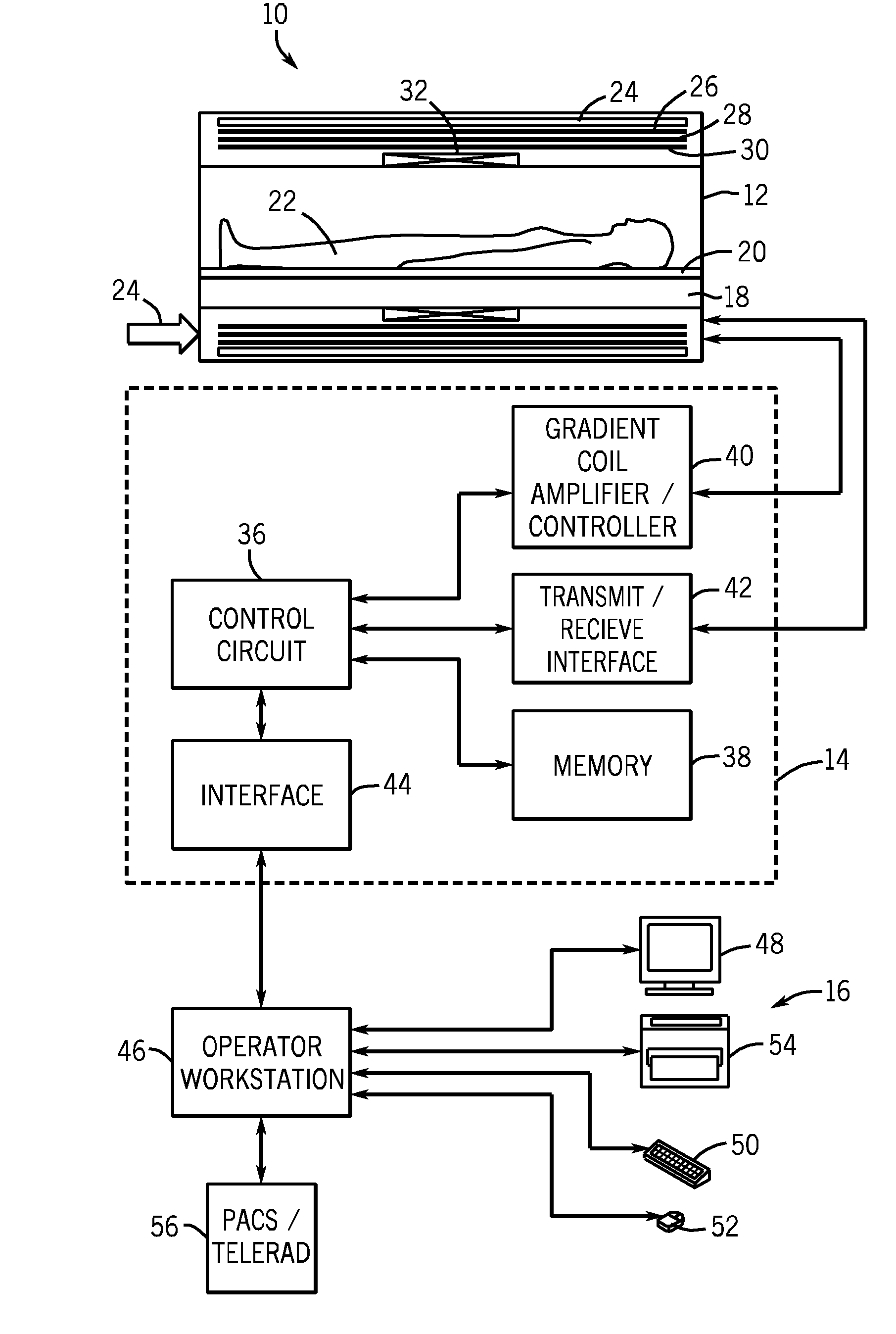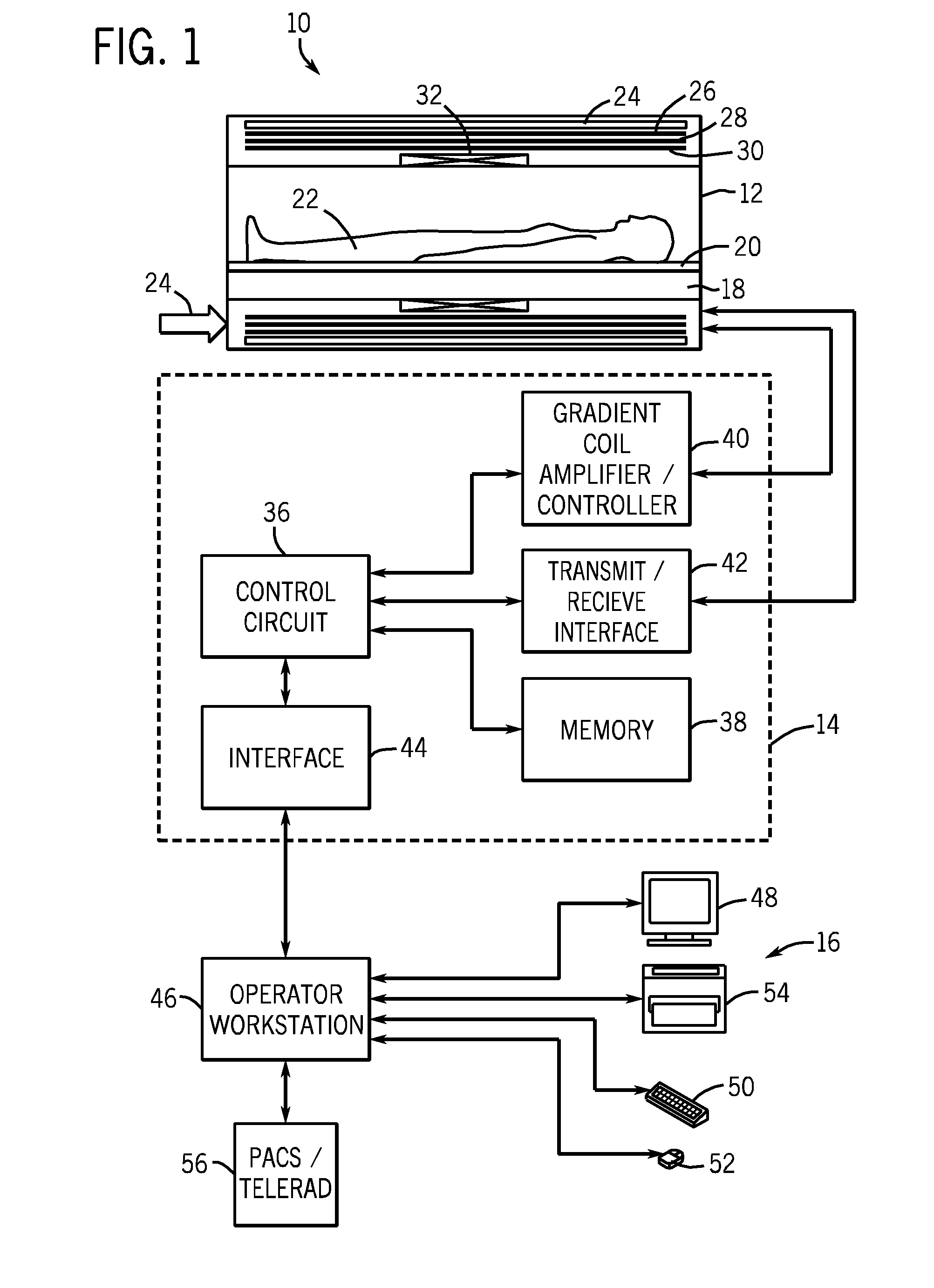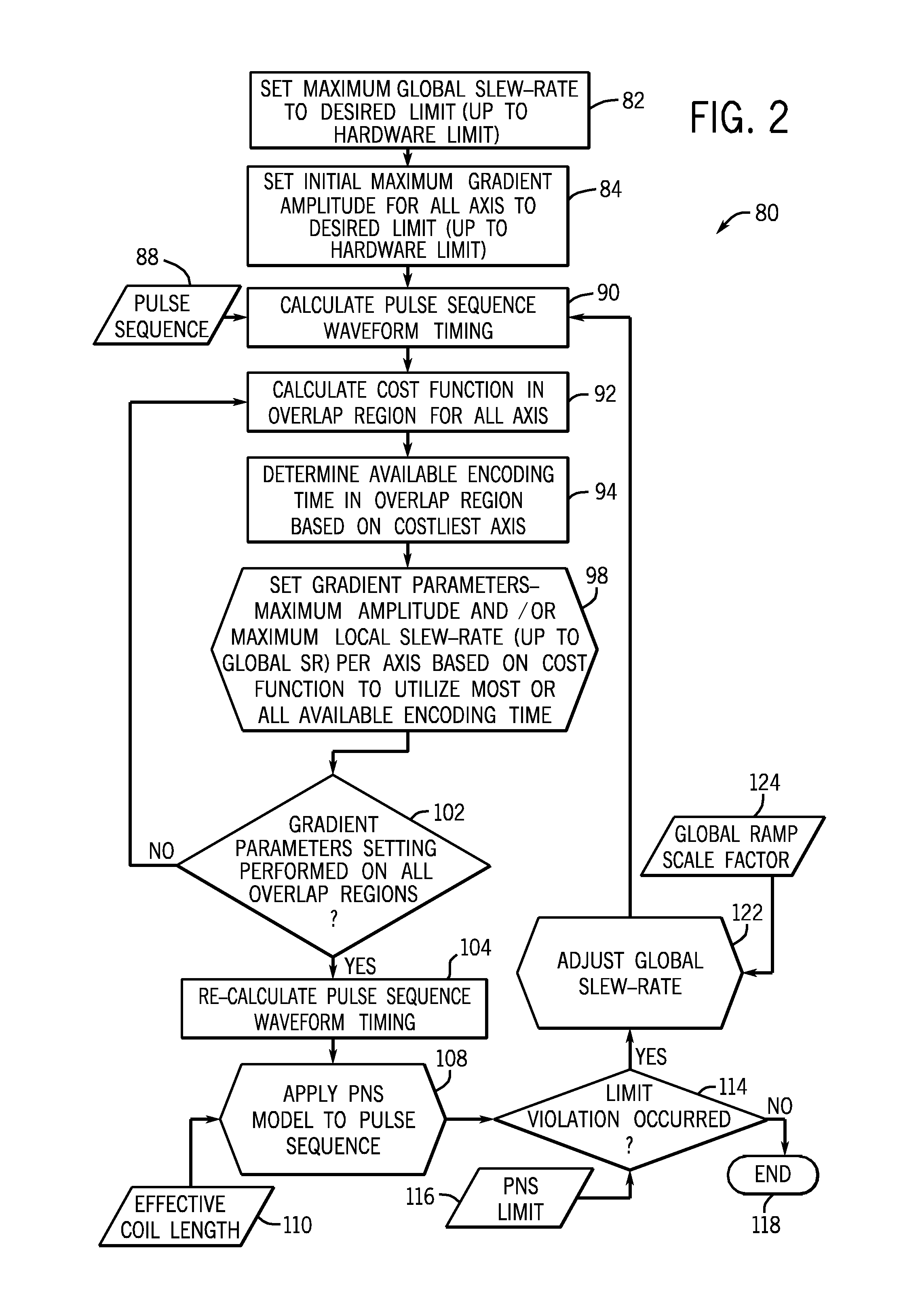Method and system for modifying pulse sequences
a pulse sequence and pulse technology, applied in the field of magnetic resonance imaging systems, can solve the problems of limiting imaging performance, patient safety constraints imposed on the system, and difficult to achieve the highest imaging performan
- Summary
- Abstract
- Description
- Claims
- Application Information
AI Technical Summary
Benefits of technology
Problems solved by technology
Method used
Image
Examples
Embodiment Construction
[0017]Magnetic resonance imaging (MRI) is a useful technology for generating internal views of a patient that might not be easily obtained using other techniques. In addition, to generate images, an MRI system utilizes magnetic fields and radio frequency (RF) energy and, therefore does not subject the patient to X-rays or gamma rays where the patient dosage may be an issue. The timing and strength of the various magnetic and RF fields that may be generated as part of a MRI examination may be described by a pulse sequence diagram. Such a pulse sequence diagram may describe aspects of the examination such as the repetition time (TR) (the time between the application of one RF pulse and the next RF pulse), echo time (TE) (the time between the application of an RF pulse and the signal peak detected at the RF coil), echo spacing, and so forth. In general, improved imaging performance may generally be equated with minimizing or reducing TR, TE, and echo spacing. In theory, these values ma...
PUM
 Login to View More
Login to View More Abstract
Description
Claims
Application Information
 Login to View More
Login to View More - R&D
- Intellectual Property
- Life Sciences
- Materials
- Tech Scout
- Unparalleled Data Quality
- Higher Quality Content
- 60% Fewer Hallucinations
Browse by: Latest US Patents, China's latest patents, Technical Efficacy Thesaurus, Application Domain, Technology Topic, Popular Technical Reports.
© 2025 PatSnap. All rights reserved.Legal|Privacy policy|Modern Slavery Act Transparency Statement|Sitemap|About US| Contact US: help@patsnap.com



